Mary Reed Newland - The Saints and Our Children: The Lives of the Saints and Catholic Lessons to be Learned
Here you can read online Mary Reed Newland - The Saints and Our Children: The Lives of the Saints and Catholic Lessons to be Learned full text of the book (entire story) in english for free. Download pdf and epub, get meaning, cover and reviews about this ebook. year: 2015, publisher: TAN Books, genre: Detective and thriller. Description of the work, (preface) as well as reviews are available. Best literature library LitArk.com created for fans of good reading and offers a wide selection of genres:
Romance novel
Science fiction
Adventure
Detective
Science
History
Home and family
Prose
Art
Politics
Computer
Non-fiction
Religion
Business
Children
Humor
Choose a favorite category and find really read worthwhile books. Enjoy immersion in the world of imagination, feel the emotions of the characters or learn something new for yourself, make an fascinating discovery.
- Book:The Saints and Our Children: The Lives of the Saints and Catholic Lessons to be Learned
- Author:
- Publisher:TAN Books
- Genre:
- Year:2015
- Rating:4 / 5
- Favourites:Add to favourites
- Your mark:
- 80
- 1
- 2
- 3
- 4
- 5
The Saints and Our Children: The Lives of the Saints and Catholic Lessons to be Learned: summary, description and annotation
We offer to read an annotation, description, summary or preface (depends on what the author of the book "The Saints and Our Children: The Lives of the Saints and Catholic Lessons to be Learned" wrote himself). If you haven't found the necessary information about the book — write in the comments, we will try to find it.
The Saints and Our Children: The Lives of the Saints and Catholic Lessons to be Learned — read online for free the complete book (whole text) full work
Below is the text of the book, divided by pages. System saving the place of the last page read, allows you to conveniently read the book "The Saints and Our Children: The Lives of the Saints and Catholic Lessons to be Learned" online for free, without having to search again every time where you left off. Put a bookmark, and you can go to the page where you finished reading at any time.
Font size:
Interval:
Bookmark:
The Saints and Our Children
Mary Reed Newland
| Nihil Obstat: | John A. Goodwine, J.C.D. | |
| Censor Librorum | ||
| Imprimatur: |  | Francis Cardinal Spellman |
| Archbishop of New York | ||
| New York | ||
| February 24, 1958 |
Copyright 1958 by Mary Reed Newland.
Originally published by P.J. Kenedy & Sons, New York, in 1958.
Library of Congress Catalog Card No.: 94-61998
ISBN: 0-89555-517-4
TAN Books
Charlotte, North Carolina
www.TANBooks.com
1995
To Bill
and Monica, Jamie, John, Peter,
Stephen, Philip, Christopher
and their Saints,
and all the Saints in this book,
and all the Saints
who wouldn't fit in this book:
May the ones who are,
help make saints of the ones who aren't!
Psalm 144:10-12
ACKNOWLEDGMENTS
I WISH to thank the following people for help with this book:
Miss Sylvia de Santis of the Monson Free Library of Monson, Massachusetts; Miss Anna Manning of the Boston Public Library, Boston, Massachusetts; Miss Mollie Greeley, Holyoke, Massachusetts; Father Sylvester, O.F.M. Cap., Librarian at the Franciscan College of St. Lawrence, Rome; Father Bruno, O.F.M., Cap.; Brother Stanley Mathews, S.M., of the Marian Library, University of Dayton; and Father Philip Hoelle, S.M., editor of The Marianist where the chapter, "The Holy Family," first appeared.
Also, Father Francis N. Wendell, O.P., editor of The Torch where five of these chapters first appeared; Father Mark Heath, O.P.; Father Paul Joseph Dignan, C.P.; Father William Kelley, S.D.B.; Father Frank Russo; Father Richard Hoey, pastor of St. Patrick's parish, Monson, Massachusetts; Mother Kathryn Sullivan, R.S.C.J.; Miss Julie Kernan, general editor, and Miss Elizabeth Bartelme, editor, P. J. Kenedy & Sons, New York, and the Kenedys for allowing me to borrow freely from their Butler's Lives of the Saints; all the publishers who kindly have granted permission to quote from their books; and, last but not least, all the darlings family and friends who prayed endlessly that "mother will finish her book."
M.R.N.
WHY THESE SAINTS?
S T . T HOMAS A QUINAS was once asked by a married sister what one did to become a saint. He replied, "Will it." He meant, of course, that since it is God's will that we be saints we must join our wills to His, for becoming a saint is not a matter of do-it-yourself. But there is no getting away from the fact that God cannot do it all by Himself since we do have wills and they can stand in the way.
This being so, we must get to work. The will of God, said St. Paul, is your sanctification; and to be a saint, the Church says, one must practice heroic virtue. This sounds like one must at least be off in Indo-China having his head chopped off. But Blessed Claude de la Colombiresays other things can be the means of heroic virtue: "... a word escapes which should not have been spoken, or some one utters another that offends us; a servant (waiter, clerk, counter boy ) is clumsy or slow in waiting on you; a child inconveniences you, a bore stops you, a heedless fellow jostles you, a horse (taxi, bike, truck ) bespatters you with mud; you don't like the weather, your work is not proceeding according to plan; a piece of furniture is broken, a dress is stained or torn. I know that this is no occasion for practicing very heroic virtue, but I do say that this would be enough to acquire it without fail, if we really wished to." Thank goodness we have saints who can tell us these things. Certainly no one is better qualified.
Why did we choose these saints? Because these are some we have loved in our family and from whom we have learned much. The chapter on Abraham grew out of our need to know the beginning of the Jews, since God whose life flows into us at the baptismal font chose to accomplish this by becoming a Jew. The chapters on St. John Bosco, St. Dominic Savio, St. Maria Goretti, St. Bernadette and St. Thrse of Lisieux grew from our need to know what part their parents, their families, their teachers, their environments, their times played in forming them, and how they overcame faults and difficulties, grew in virtues and love. How did they do it, we wanted to know. Or, if one cannot say they did it, how did they cooperate with God who did it? How much of the making of a saint depends upon the family and how much upon special grace? One thing we discovered is that there is no answer to that last question unless it answers it to say these people did not have to become saints. God did not force them to be saints. The chapter on the Holy Family answers our own question, "How can we possibly imitate them? It is hard enough to imitate saints but God and His Mother and His foster-father? Isn't this impossible?" No, it is not.
The chapters in are different. They are meant to help parents when a saint story is called for, and the teaching and correcting and conversation of Christian parents ought to lean heavily on the saints for help. This is how saint stories are best used: to make a point, to warm a heart, to stir up a hunger. Three saints give advice to parents on the preventing of pride and vainglory in children, on the folly of customs which are a risk to the chastity of children, on how children can be taught to work with Christ to save souls. The bit on St. Catherine of Siena is not in any way a comprehensive sketch of her life, but rather an introduction to a saint who is rarely introduced to children. St. Catherine is like a girl in a fairy tale only better St. Catherine came true. St. Philip Neri's genius and wit help with the matter of boredom, impatience and pride, while St. Perpetua and her friend St. Felicitas contribute lessons in stories on Purgatory, modesty and love.
The last chapter has twenty stories to help parents impress certain virtues, stories easily learned by parents and readily loved by children. Often, when a correction is over and done with, it will be the story that will remain in the mind and heart, continuing to press home the lesson in holiness. There are stories to help with obedience, perseverance, criticism, selfishness, devotion at prayers, answers to prayers, bad tempers and learning to love. There is one frightful episode, a horror story. I have included this because it happened. It is as terrifying as any story you could make up, any episode out of history or off the front page, out of any television thriller. It is horror with the relation to God made clear which redeems even horror. This is one of the things we must understand and can learn only from the lives of the saints: that in a fallen world there will be violence and murder, torture and atrocities, but Christ has given these a relation to Himself by being their victim first. We must begin to teach our children that this is what the blow on the cheek at Confirmation means: one will go the whole way for Him, blood and all if need be.
We are not yet saints but it is an odd kind of humility for a Christian to say he can't be. That is to betray holy hope. Better he say he won't be unless he chooses to be. That is why St. Thomas said, "Will it." He won't be until the last gasp even then, for there is always the chance he will fall. But he must try. How dare he not! This is the point of it all to be saints; to grow so in love with God that nothing else matters but that He has given us Himself to love.
M. R. N.Feast of the
Immaculate Conception
December 8, 1957
CONTENTS
PART I

Font size:
Interval:
Bookmark:
Similar books «The Saints and Our Children: The Lives of the Saints and Catholic Lessons to be Learned»
Look at similar books to The Saints and Our Children: The Lives of the Saints and Catholic Lessons to be Learned. We have selected literature similar in name and meaning in the hope of providing readers with more options to find new, interesting, not yet read works.
Discussion, reviews of the book The Saints and Our Children: The Lives of the Saints and Catholic Lessons to be Learned and just readers' own opinions. Leave your comments, write what you think about the work, its meaning or the main characters. Specify what exactly you liked and what you didn't like, and why you think so.


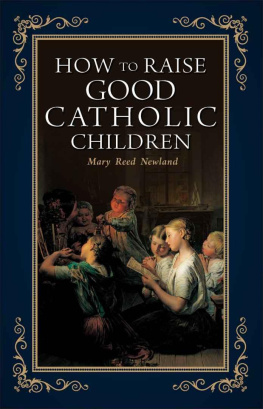
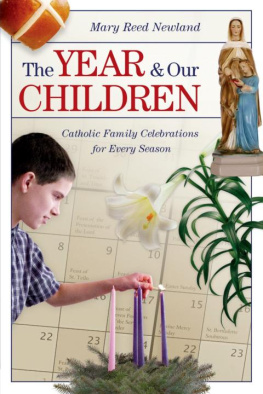
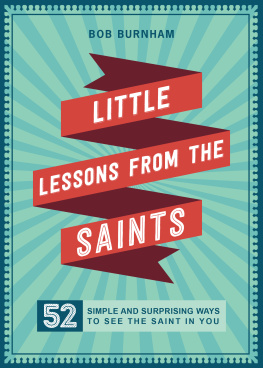

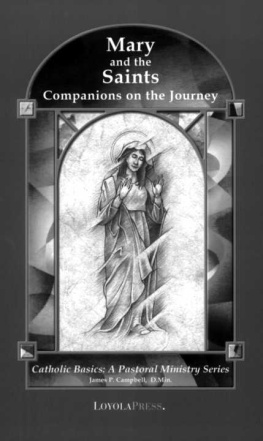
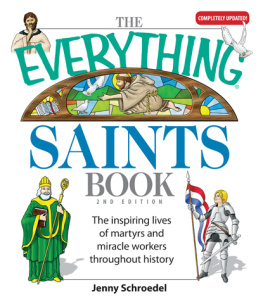
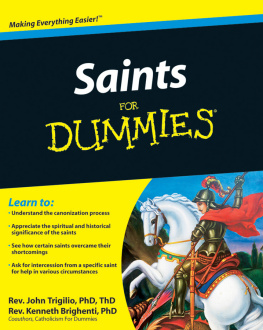
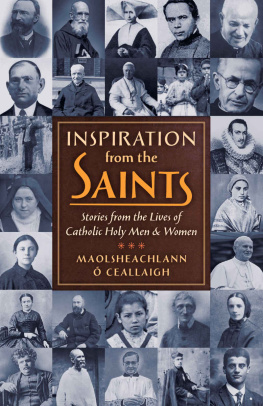
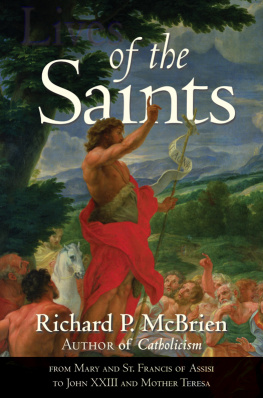

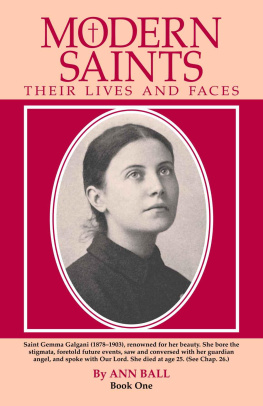
![Catholic Way Publishing [Publishing - The Saints Collection [2,428 Saints]](/uploads/posts/book/131283/thumbs/catholic-way-publishing-publishing-the-saints.jpg)